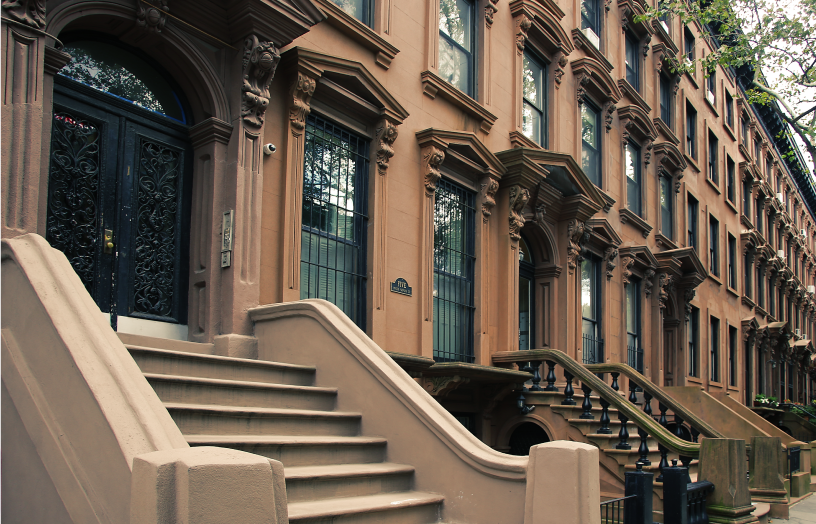In the weeks since COVID-19 precautions upended daily life in New York, the number of new homes for rent and sale in the city has dropped precipitously, while prices have remained mainly unchanged, according to StreetEasy data.
The COVID-19 situation is changing rapidly, and StreetEasy is closely monitoring our market data for shifts. Here’s a look at the impacts of COVID-19 on the NYC housing market so far.
As COVID-19 Hit, Sales Inventory Fell to Holiday Levels
March is typically the beginning of the home shopping season. Before the arrival of social distancing practices due to COVID-19, inventory was reaching record highs across the city, due to the ongoing slowdown of the sales market.
Then came COVID-19. In the two weeks from March 16 to March 27, the number of new sales listings on StreetEasy declined 72 percent from the two weeks prior. Compared to last year, new inventory in the second half of March was down 75 percent, with only 541 new homes coming to market.
On the rentals side, the 3,926 new listings from March 16 to March 27 represented a 54 percent decline from the previous two weeks and a 57 percent drop from the same period in 2019.
These inventory levels are more typical of the period around Thanksgiving and Christmas than late March. But in times of lower demand, sellers and landlords often take properties off the market and wait, while landlords may offer additional concessions. Many sellers and landlords may also be avoiding listing inventory right now to minimize in-person contact.
Manhattan and Brooklyn 1-2BRs Under $2,700 Article continues below
The incentives to move have also shifted. Between various financial relief efforts such as the 90-day moratorium on evictions and mortgage payments, many New Yorkers don’t have an immediate need to move.
But even as many people wait out the present uncertainty, others simply must move — due to changing life circumstances, or, for renters, expiring leases. As with any market where inventory is tight, fewer choices present home shoppers with additional challenges. That will be especially true for New Yorkers looking to move this season.
How Is COVID-19 Impacting NYC Real Estate Values?
With the COVID-19 situation changing almost daily, there has not been any immediate significant impact on median asking rents and sale prices.
The New York market has seen some changes in price cuts, but not much. Sellers typically cut prices to incentivize buyers in a weak sales market and move their properties more quickly. Price cuts are a useful tool when supply outpaces demand.
NYC Real Estate Sales Market: Both Supply and Demand Fall
At the moment, however, we are seeing fewer sales listings with price cuts across the city, compared to the first two weeks of March. There is less demand, but also less supply. As the inventory numbers show, sellers are waiting to list their homes later, potentially for a higher price, instead of giving discounts to win a quick sale right now.
Looking at other markets during previous health crises can provide perspective. During the 2003 SARS epidemic, home prices in Hong Kong did not fall significantly, but transactions fell by 33% to 72%, as customers avoided in-person contact. Once the outbreak subsided, the market recovered quickly, and transaction volumes snapped back to normal levels.
Earlier this year, as the novel coronavirus pandemic swept China, early news reports indicated that while transactions had nearly ceased, home prices had not fallen.
Rental Discounts Tick Up in Manhattan
On the rentals front, the share of available rentals with a discount fell in Brooklyn and Queens by 2 and 1 percentage points, respectively. In Manhattan, discounts rose by 1 percentage point. One reason for this is the historically high rent levels in Manhattan. During periods of economic uncertainty like the present, renters may be inclined to trade a spacious apartment or an easy commute in favor of saving money. That could mean downsizing or moving to another borough.
Advice for New Yorkers Who Need to Rent or Buy
Right now, safety is the top priority. For renters and buyers who may be changing your mind about moving this spring, ask your landlord if there are options to stay in your current home until the severity of the COVID-19 pandemic lessens.
For New Yorkers who are intent on moving or have no choice, flexibility and adaptability will be key. And make sure to negotiate — some landlords are offering creative concessions to give relief to new tenants.
Manhattan, Brooklyn and Queens 1-2BRs Under $800K Article continues below
This Carroll Gardens apartment advertises a “Special COVID-19 emergency discount,” where rent for the first two months is $2,900. Starting July 1, the regular rate of $3,750 per month returns. Even if concessions aren’t advertised on a listing, landlords might be more inclined to provide one during these uncertain times. Note that rents in Manhattan were at record highs before the crisis hit, and that you may find the best deals further from the city center or in the outer boroughs.
Buyers should likewise work with their agents to negotiate and adjust offers based on these new inventory and demand dynamics.
All shoppers and browsers can take advantage of alternative tour methods, like the new 3D Home virtual tours on StreetEasy, and more conventional walkthrough videos. And remember that agents, whom you may contact on any StreetEasy listing, are deeply knowledgeable and eager to help, whether you’re looking to move or just ask a question.
For more tips, read our guide to renting an NYC apartment during COVID-19.
—
Whether you’re looking to rent or to buy, search NYC apartments on StreetEasy.
